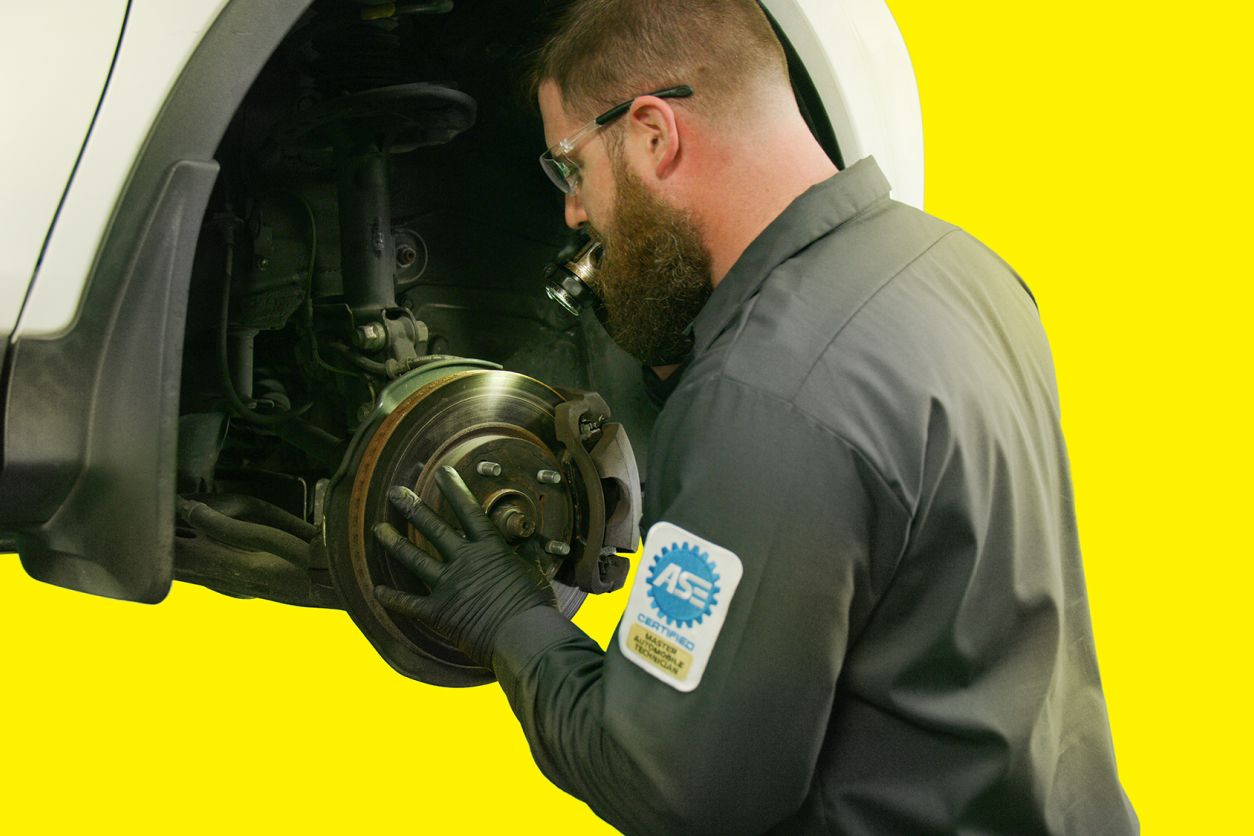Regenerative braking — you’ve probably heard the term before, but you may not know what it is or how it works. If so, you’re in the right place. In this guide, we’ll cover what regenerative braking is, as well as its advantages and disadvantages.
What Is Regenerative Braking and How Does it Work?
Regenerative braking is a mechanism found on most hybrid and full-electric vehicles. It captures the kinetic energy from braking and converts it into the electrical power that charges the vehicle’s high voltage battery. Regenerative braking also slows the car down, which assists the use of traditional brakes.
In a conventional braking system, a car slows down due to friction between the brake pads and rotors. But this system is highly inefficient when it comes to conserving energy. Nearly all of the kinetic energy propelling your car forward is lost as heat when you apply the brakes. That’s a lot of wasted energy!
Regenerative braking solves this problem by recapturing upwards of 70% of the kinetic energy that would otherwise be lost during braking. The amount of energy recovered depends on your car model and driving behavior.
How Does Regenerative Braking Provide Electricity?
Regenerative braking turns kinetic energy into electricity by reversing the process that drives the car forward. In electric cars, the drivetrain is powered by a battery pack that powers a motor (or motors), creating torque–rotational force–on the wheels. In other words, electrical energy from the battery becomes mechanical energy that spins the wheels.
With regenerative braking, the energy from your spinning wheels is used to reverse the direction of electricity - from the electric motor(s) to the battery. All you have to do is remove your foot from the accelerator or, in some cases, press the brake pedal to activate regenerative braking. The electric motor not only acts as an electric generator, but it also helps slow your car down because energy is consumed by the wheels as they rotate the shaft in the electric motor.
Advantages and Disadvantages of Regenerative Braking
Advantages of Regenerative Braking
As you can imagine, capturing and reusing more energy from braking has real benefits for the efficiency of your vehicle. Plus, it means less wear and tear on your brakes. Here are the biggest advantages of regenerative braking:
Brake Pads & Rotors May Last Longer
Even though regenerative braking provides a lot of stopping force on its own, EVs and hybrids also come with conventional hydraulic brakes. However, since regenerative braking does much of the work while slowing the vehicle, the brake pads and rotors are used much less frequently.
As a result, they typically last much longer between servicing, which can help drivers save on maintenance costs. That being said, it’s still important to have your brakes inspected regularly, and routine checks may be required as part of your manufacturer's suggested maintenance schedule. Just bring your hybrid or electric vehicle into Tires Plus for a quick and convenient inspection.
Extended Range Possibilities for EVs
Capturing braking energy and sending it right back to your EV’s battery pack can extend your driving range. Estimations show that regenerative braking can potentially add hundreds of miles of electric driving range throughout the year. That means less time spent charging and more time getting where you need to go.
When charging stations are still far and few between in many areas, every mile counts. Plus, when you plug into the electric grid less often, you help reduce emissions from coal and gas-powered electricity suppliers.
Better Fuel Efficiency for Hybrids
While hybrids still have internal combustion engines under the hood, they’re designed to use their electric motor as much as possible. Regenerative braking helps keep the battery pack charged, so drivers don’t have to rely on their engines as often, helping them reduce fuel consumption and save money.
Disadvantages of a Regenerative Braking System
While the positives of regenerative braking definitely outweigh the negatives, no technology is perfect. Here are a few instances where regenerative braking falls short:
May Be Less Effective at Lower Speeds
Traveling at slower speeds means your vehicle has less kinetic energy and requires less braking force. As a result, the regenerative braking system is fed less energy and does not supply the battery pack with much charge. Some vehicle manufacturers also feel that coasting may outweigh the benefits of regenerative braking in some situations.
Brake Pedal May Feel Different
One thing you want to be sure of while driving is that your brake pedal works. While the brake pedals on hybrid and electric vehicles certainly function, they may feel different in a way you’re not used to.
You may experience momentary unresponsiveness or a pedal that doesn’t compress as smoothly as you expect. In some cases, you may need to modulate the pedal differently.
The good news is that this change in brake pedal feel is less of a problem than it used to be. Newer hybrid and EV models have more responsive brake pedals that feel the same as any set of conventional brakes.
Potentially Less Stopping Power
While regenerative braking performs just fine in most braking situations where you gradually come to a stop, it may not provide the same level of stopping force that conventional brakes do. This means hybrid and EV drivers may have to press harder on the brakes to achieve the same effectiveness.
However, this problem is also improving with newer regenerative braking systems. In more recent car models, you may not notice a difference in stopping power at all.
Trust Tires Plus to Get Your Hybrid or EV Serviced Properly
Not only does regenerative braking help to conserve energy, but it can save you money on brake repairs in the long run. However, just like any standard gas vehicle, electric cars need a little TLC from time to time. When you need general maintenance or other services for your ride, trust Tires Plus to get the job done right — the first time.



